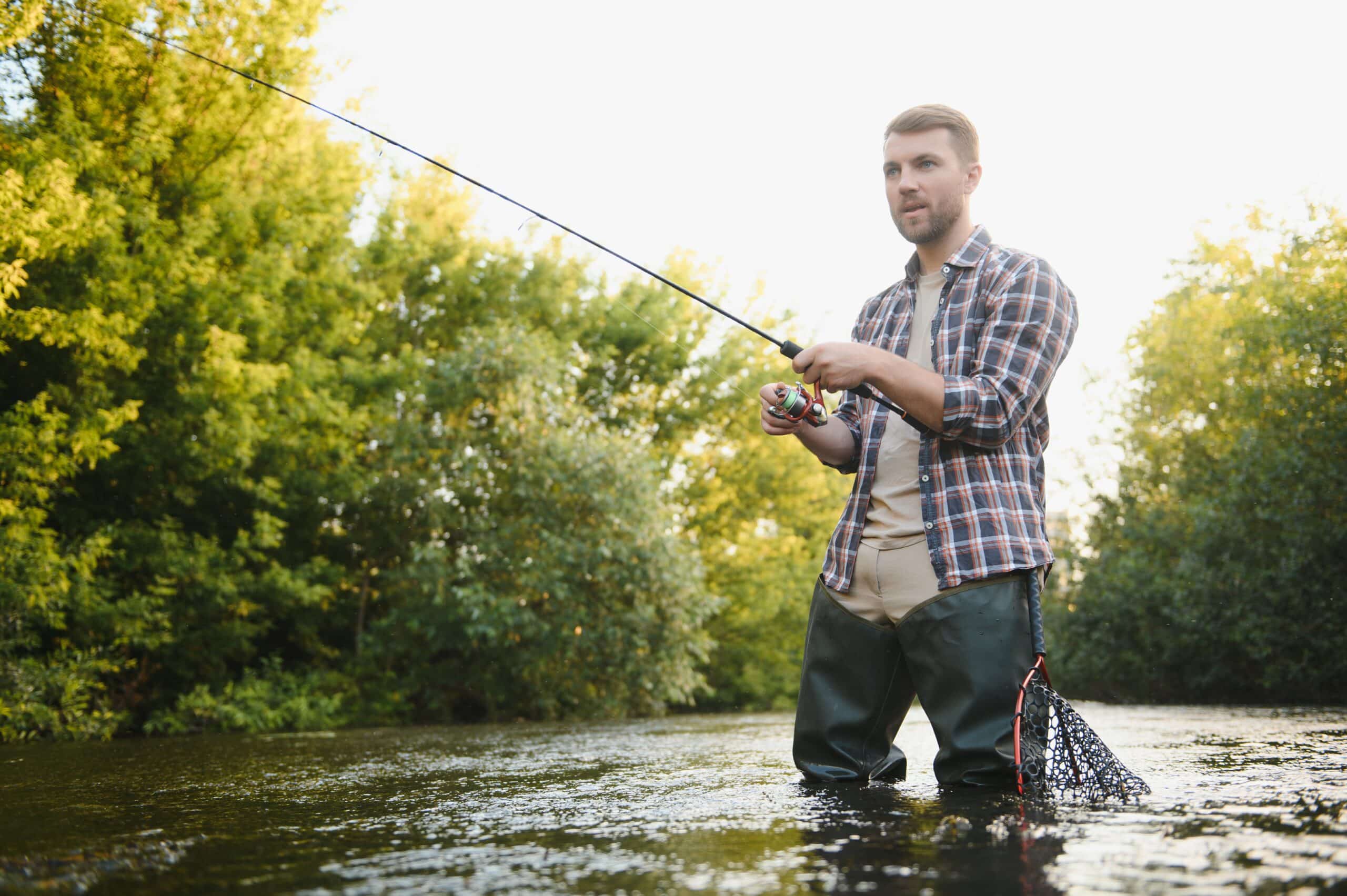Do You Wear Pants Under Fishing Waders?
Key Takeaways
- Wearing pants under fishing waders is recommended for several reasons:
- They provide an extra layer of insulation, keeping you warm in colder weather.
- Pants protect your legs from abrasion and irritation caused by the waders.
- Moisture-wicking pants help pull sweat away from your skin, keeping you dry and comfortable.
- Considerations and recommendations:
- In hot weather, wearing lightweight pants or under layers may be more comfortable.
- Choose pants that allow for comfortable movement and do not hinder fishing performance.
- Choose pants made of moisture-wicking materials to avoid discomfort and skin irritations.
- Layering recommendations:
- In warmer weather, lightweight fishing pants or under layers are recommended.
- In cooler seasons, opt for thicker socks and fleece or thermal underlayers for additional insulation.
- Neoprene waders can be worn for added insulation in extremely cold conditions.
One common question among anglers is whether or not they should wear pants under their fishing waders. The answer is yes, it is recommended to wear pants under fishing waders. Wearing pants under waders provides several benefits that can enhance your comfort and overall fishing experience.
Why Wear Pants Under Waders?
There are several reasons why wearing pants under fishing waders is a good idea. Firstly, pants can provide an extra layer of insulation, which is especially beneficial in colder weather. The additional layer can help trap body heat and keep you warm while you’re out on the water.
Secondly, wearing pants under waders can protect your legs from abrasion and irritation caused by the waders themselves. The material of the waders can sometimes rub against your skin, leading to discomfort. By wearing pants, you create a barrier between your legs and the waders, reducing the risk of chafing and irritation.
Another advantage of wearing pants under waders is that they can provide additional moisture-wicking capabilities. Fishing can be a physically demanding activity, and it’s not uncommon to break a sweat while wading or casting. Moisture-wicking pants can help pull sweat away from your skin, keeping you dry and comfortable.
Considerations and Recommendations
While wearing pants under fishing waders offers numerous benefits, there are a few considerations to keep in mind. Firstly, in hot weather, wearing pants under waders can make you feel warmer. The additional layer of clothing can trap heat and potentially lead to overheating. In such conditions, it may be more comfortable to wear lightweight pants or under layers.
Another consideration is the potential restriction of movement and added bulk that pants under waders can cause. Depending on the fit and material of the pants, they may restrict your range of motion, making it more challenging to move freely while fishing. It’s essential to choose pants that allow for comfortable movement and do not hinder your fishing performance.
Additionally, it’s crucial to choose pants made of moisture-wicking materials. If the pants are not moisture-wicking, they can retain sweat and moisture, leading to discomfort and potential skin irritations. Polyester, bamboo, nylon, or wool are recommended fabrics for pants to wear under waders, as they offer moisture-wicking properties.
Layering Recommendations
When it comes to layering under fishing waders, it’s essential to choose the right clothing for the given weather conditions. In warmer weather, lightweight fishing pants or under layers are recommended. These provide some insulation without causing excessive warmth.
In cooler seasons, it’s advisable to opt for thicker socks and fleece or thermal underlayers. These provide additional insulation, keeping you warm and comfortable during your fishing adventures. Neoprene waders can also be worn for added insulation in extremely cold conditions.
Conclusion
In conclusion, wearing pants under fishing waders is generally recommended. They offer insulation, protect against abrasion and irritation, and provide moisture-wicking capabilities. However, it’s essential to consider the weather conditions and choose appropriate pants that allow for comfortable movement and are made of moisture-wicking materials.
Related Websites:
FAQs:
Q: What are fishing waders and why are they important?
Fishing waders are special waterproof garments that cover your legs and torso, allowing you to stand in water while fishing. They come in different types such as chest, waist, and hip-high waders. Fishing waders are important because they provide protection from water and insulation against cold temperatures, keeping you dry and comfortable while fishing.
Q: Do I need to wear pants under fishing waders?
The need to wear pants under fishing waders depends on the type and material of the waders. Neoprene waders, for example, provide insulation and do not necessarily require pants underneath. However, in situations where added warmth or an extra layer is preferred, wearing lightweight, moisture-wicking pants is advisable.
Q: What factors should I consider when deciding whether to wear pants under fishing waders?
When deciding whether to wear pants under fishing waders, consider factors such as weather conditions and water temperature. If the water is extremely cold or the weather is chilly, wearing pants underneath can provide additional warmth. Additionally, personal preference and comfort level should also be taken into account.
Q: What are some tips for wearing pants under fishing waders?
If you prefer wearing pants under fishing waders, opt for lightweight and moisture-wicking pants that offer comfort and breathability. Avoid wearing jeans or heavy materials that retain moisture, as they can make you feel uncomfortable. Choose pants specifically designed for outdoor activities to ensure maximum comfort and flexibility.
Q: Are there alternatives to wearing pants under fishing waders?
Yes, there are alternatives to wearing pants under fishing waders. Thermal base layers, fleece-lined leggings, or insulating socks can be worn to provide added warmth or layering without the need for pants. These options can enhance insulation and keep you comfortable during colder fishing expeditions.






